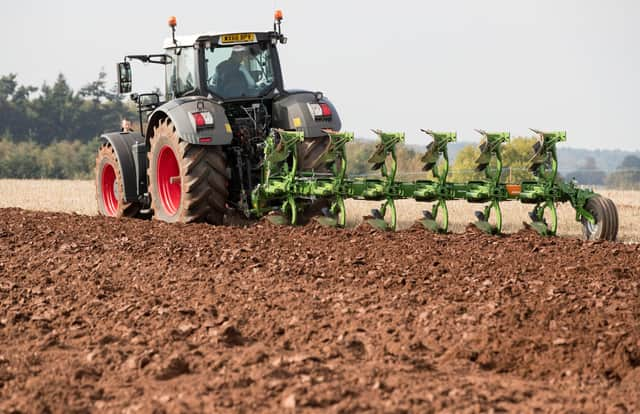Farming: It’s aye been true that working the land is dangerous - Andrew Arbuckle


A similar tale of neighbourly nosiness emerged when the police stopped an Aberdeenshire farmer whose car was weaving dangerously from one side of the road to the other. When asked to explain his actions, the old farmer replied, in all innocence, that he just wanted to check what the neighbours on both sides of the road were up to.
Last week, I received a photo from a friend who used to work for a machinery dealer but who now tours the country taking snaps of work going on in the fields around his hometown.
Advertisement
Hide AdAdvertisement
Hide AdThe photo showed a tractor with a buck rake full of grass on top of a silage pit. It must have been a good crop of silage as the clamp was already well above the side walls. In fact, in mountaineering terms the tractor and its load were at the summit with steep slopes all around.
I started to think when last I saw such an image and remembered it was back in the days when the Health and Safety Executive used to hold press conferences with scary films on the many ways people could die or be maimed on farms.
Trying to maintain an upbeat veneer among all the blood and mangled bodies on display or their chalked-out outlines, the agricultural press would refer to these HSE briefings and those presenting them, as Dr Death performances. But deep down, we knew these had been real living people minced up, electrocuted, drowned and, by many other methods, were now deceased.
Somewhere in my office is an old photo of fresh-faced callow young farmers at a farewell party. It was taken well before selfies were invented and the 25 people in the photo had gathered to say their goodbyes to a friend who was heading off to Australia.
It is a sobering photo. Not because some have passed away naturally, but because there was so and so who died after being wrapped round an unguarded power take off shaft. Standing next to him was a young man whose life came to a sudden stop on a concrete floor following a fall through an asbestos roof.
There are others in the photo who now carry ailments from their life in agriculture with anything from deafness through driving noisy tractors through to dicky knees acquired by bending and lifting heavy weights.
The point is that with 20 people dying in farm accidents in the UK last year, farming continues to have one of the poorest safety records in any workplace and that is not a good advert for the industry. For those who like figures, farm workers constitute 1.5 per cent of the working population but sadly, they contribute 50 per cent to those killed while at work.
That is why, later next month, a number of farming organisations including the NFUS, the young farmers’ association and the agricultural colleges are linking up with the HSE, for Farm Safety Week aimed at highlighting the areas of danger for those working on the land.
Advertisement
Hide AdAdvertisement
Hide AdA big hurdle in reducing the accident rate would appear to be the “I have always done it this way” attitude which is a close relative of the “aye been” view which clogs up a lot of thinking. A typical example of this is the cleaning of the roof gutters from a grain bucket high above ground level with the forklift being driven by a callow inexperienced youth. Another is the use of part of a six inch nail instead of a proper fuse in an electric plug.
Many problems arise when the farmer or worker dives into a task without carefully thinking it through. When asked about this approach to work and the possibility that it could come off the rails badly, one justification is often “there was no one else on the farm to do it”.
This reaction highlights another problem facing those trying to cut down the accident rate on farms and that is the isolation factor whereby if anything goes wrong there is no one to pull the victim out or pick him or her up.
The campaign has a mountain to climb – including persuading people not to be working on steep sloped silage pits.
Comments
Want to join the conversation? Please or to comment on this article.